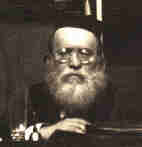 |
Hadrash Ve-Haiyunby the Reisha Rav, HaGoan Rav Aaron Levine TZ"LElucidated and Adapted by Efraim Levine |
 |
Hadrash Ve-Haiyunby the Reisha Rav, HaGoan Rav Aaron Levine TZ"LElucidated and Adapted by Efraim Levine |
Korach
Dedicated
in Honor of
Rabbi and Mrs. Aaron Yonah Piller and Family
of Chicago Illinois
To Dedicate Please Contact Hadrash Ve-Haiyun
As for these fire pans…they shall make
them into thinned out sheets as a covering for the Altar... As
a reminder to the Children of Israel, so that no alien
person who is not of the offspring of Aaron shall draw near
to bring up the smoke of incense before Hashem and he shall not
be like Korach and his assembly.
(Bamidbar 17: 3-5)
The posuk in Melachim (Melachim I 8) informs us that Shlomo Hamelech constructed a new large stone mizbeyach to replace the copper plated mizbeyach of Moshe. We may ask, whatever became of the thinned out sheets of copper that plated Moshe’s copper mizbeyach. Did not Hashem command that the copper plates should serve as a reminder that one who is not from the family of Aaron not serve in the mishkan or beis hamikdash?
It is noteworthy that the Ralbag (Melachim I 8) writes with regard to the stone altar of Shlomo Hamelech that in was indeed plated with copper. His proof is from the simple reading of a posuk in Divrei Hayamim (Divrei Hayamim II 4) that states that he (Shlomo Hamelech) made a copper mizbeyach. The simple interpretation of the posuk is that Shlomo fashioned a [stone mizbeyach in the place of the] Copper one [of Moshe]. However the Ralbag gives a more literal translation which states that it was made from copper. He then reconciles the obvious contradiction from Melachim by explaining that its structure was from stone but it was plated with copper. However, the Ralbag does not explain what forced him to deviate from the common understanding to his novel interpretation.
We may now suggest that his reason is from our posuk here that commands that the copper shall serve as a reminder of Korach’s Rebellion. The posuk does not give a time limit for this remembrance, leading us to assume that it shall be forever.
In conclusion, we have a solid basis to suggest that the outer mizbeyach in the beis hamikdash was always plated at least partially with the copper, not as commonly perceived as purely stone.
Alternatively, we may suggest as following: first it is important to emphasize the sin, which the copper reminds us of. The children of Korach were neither Kohanim, nor the offspring of Kohanim and thus not permitted to offer incense upon the Mizbeyach.
Next, let us note that stone is the perfect symbol of the connection between parents and their offspring. The Hebrew word for stone is evan. Evan has three letters aleph, beis and nun. The first two letters of the word together read av, translated as father. The last two letters together read bein, translated as son. They both however share the middle letter. We see here that the word evan in its entirety represent the connection between father and son. Perhaps the symbolic similarity between stone and the connection between father and son is eternity. Just as stone does not decay so too as long as the there is a son, the father is eternalized on this world even after his passing.
The sin of Korach was that he was not a son of Aaron and thus was not permitted to serve. When the mizbeyach was replaced with stone it no longer needed the copperplate reminder because now its very essence was a reminder. The stone of the mizbeyach itself conveyed the message that if you are not connected to the father, i.e., Aaron, you may not offer sacrifices upon it. The posuk in Divrei Hayamim that calls the stone mizbeyach “copper” emphasizes this very point. Calling the pure stone mizbeyach “copper” indicates that the reminder is no longer its copper plated surface but rather its essence.